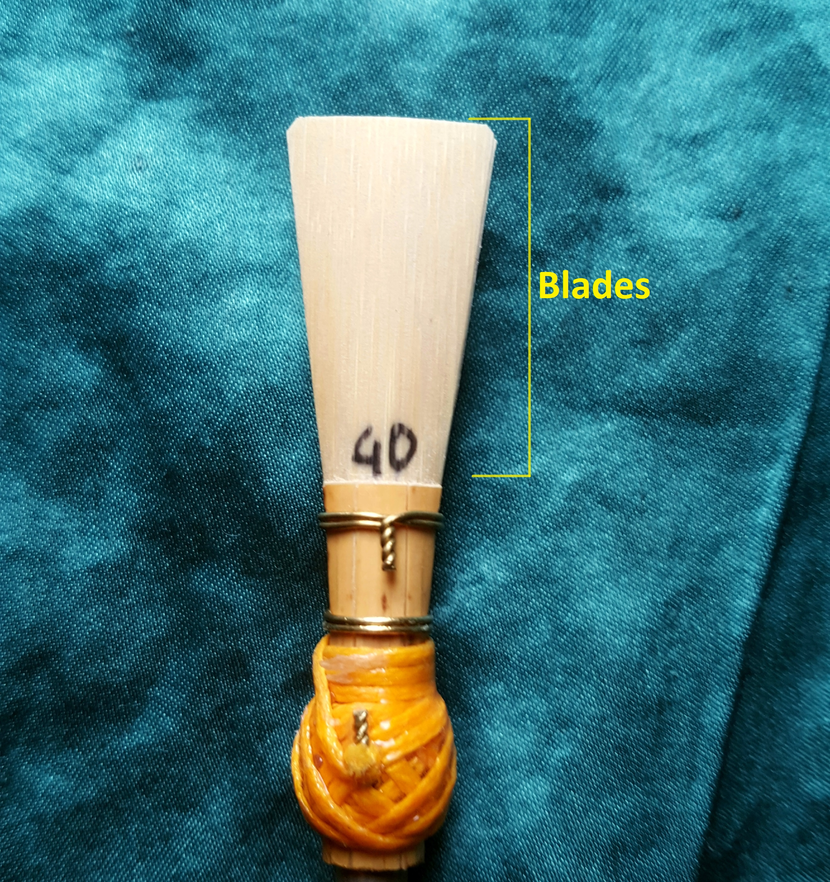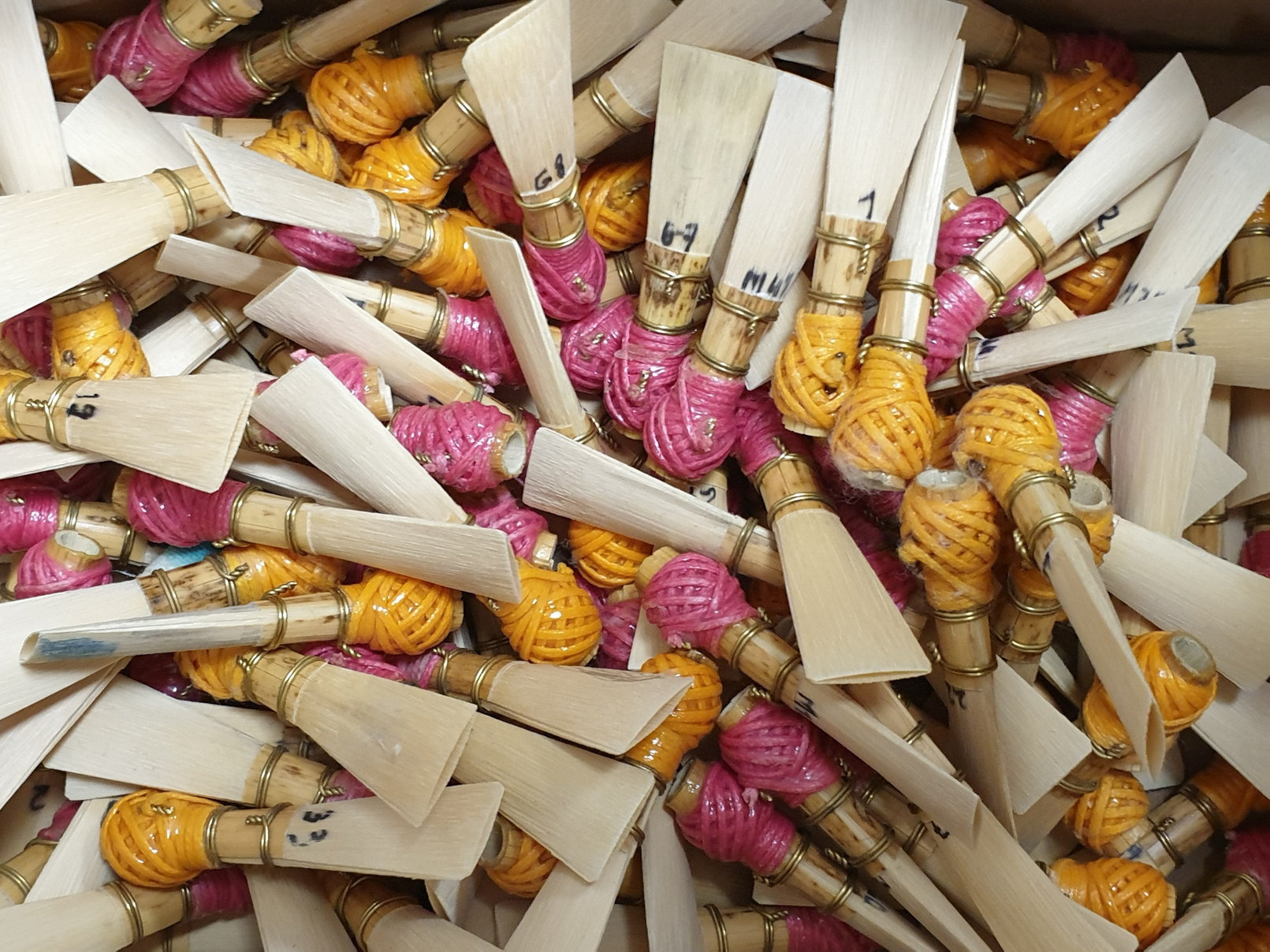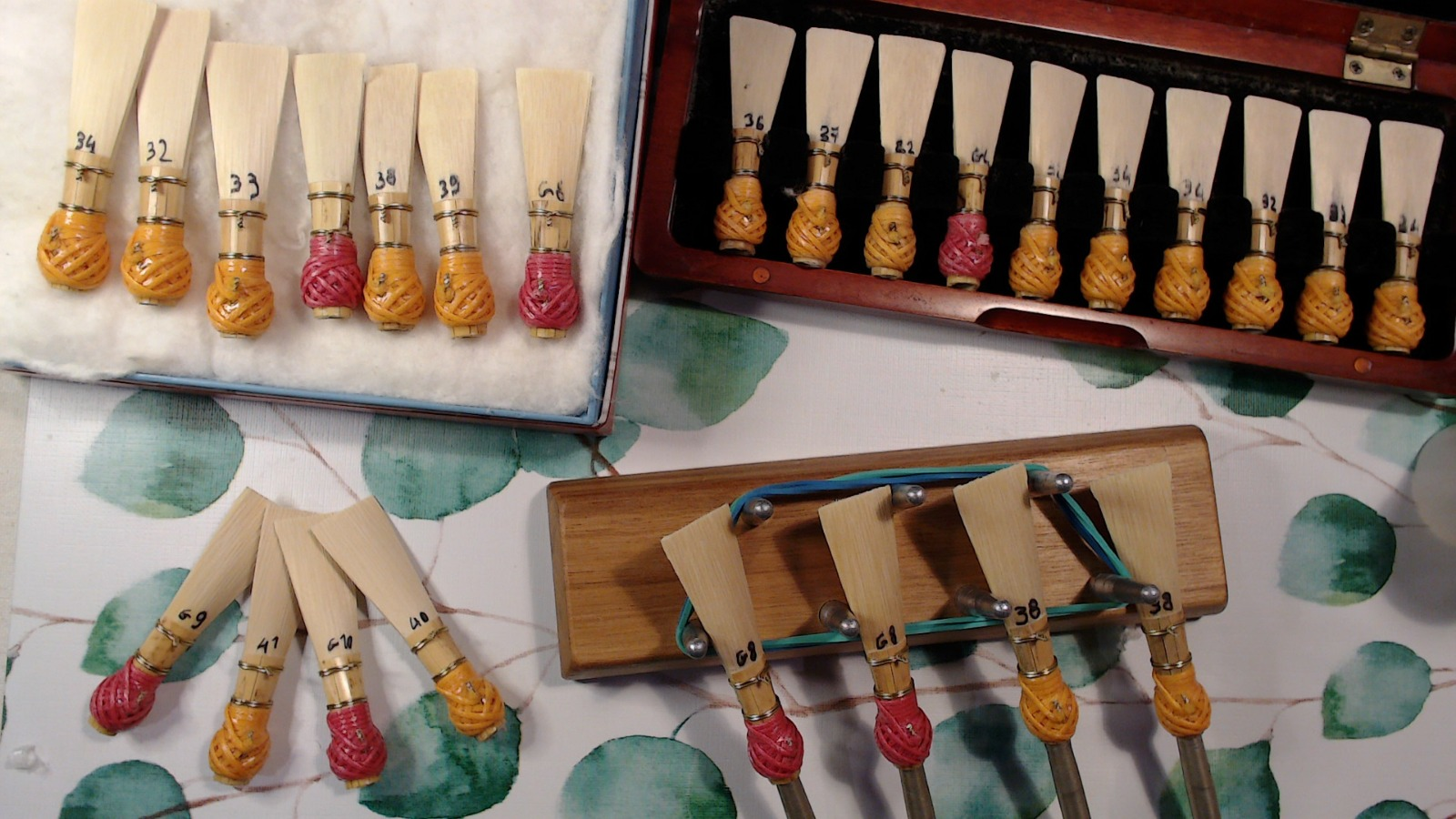REED
The reed is the part responsible for creating the sound vibration in the bassoon. Without it you cannot emit any sound from this instrument. Because of its fundamental role, it becomes the main responsible for many of the qualities of the bassoon’s sound. The slightest difference between one reed and another can have a significant impact on the performance of a bassoonist. Dynamic range capability, ease of articulation, smoothness or brilliance of sound are just some of the qualities that are directly influenced by the properties of the reed. Therefore, there are many schools of thought handed down by generations of teachers to their students to try to make the best reed possible. But what’s the best reed? It is unthinkable to make a reed that is universally considered the best. Each musical repertoire is different from each other and even within the same musical fragment different sound peculiarities are needed at the same time. The reed will always be a compromise between the various qualities needed. When looking for the best sound and color in the piano, it is inevitable to lose potential in other aspects of the sound such as the quality of the forte or the brightness of the sound. To this technical impossibility of achieving a state of perfection must be added the subjectivity of every bassoonist, who by its nature, has different style and technique preferences.
Every bassoonist, when performing as a soloist, as an orchestral or in a chamber music formation, has different needs and tries from the choice of reed to find the best material for his situation for each individual performance. For this reason, it is inevitable that there are so many different ideas about how to make a reed. What you can try to achieve is a good basic compromise, which is later and easily adaptable by every bassoonist according to the preferences and needs of the musical repertoire he will perform.
What’s a reed like?
The reed consists of two sections of Arundo Donax reed cane held together by brass wire. It can be divided into two main parts: the blades and the tube. The latter has the function of holding the structural tension of the reed and connecting it to the instrument. The blades are the heart of the reed vibration. They are free to vibrate thus creating sound. The blades are finely handcrafted going from the maximum thickness, close to the tube, to the thinnest part of the tip. They are so sensitive that you can notice differences in sound by varying the thickness of blade sections by just 0.01/0.02 mm. The bassoonists need years of practice to learn the manual skills needed to correct the blades according to their desire, but despite the skill that can be accumulated in a lifetime of practice, making small mistakes is the order of the day. To complicate the situation is the fact that the reed is made of wood cane. This is an unstable material, subject to changes in humidity, different temperatures and a gradual change in its elasticity due to simple aging. It is also important to point out that each individual tube cane is different from the other, because the plants and the conditions under which they have grown are different. This makes every reed unique and unrepeatable; you can look for analogies and similarities but creating an exact copy of a reed is impossible. All these characteristics make the art of making a reed a real challenge equal to that of luthiers in the construction of their instruments.
What’s important?
During my career as a bassoonist and reed maker I have experimented with many different types of reeds. I’ve learned that you can’t have a construction technique that’s infallible. For example, out of a dozen pieces of reed, it is very likely that only two or three of them will become a satisfying reed, while the remaining will result in discards of unacceptable quality. This is given by the nature of the cane and its innate diversity. Each construction technique will have a particular predilection for different cane quality. Therefore, every new encounter with other bassoonists is an excellent opportunity to exchange ideas and to experiment with new techniques. My goals are twofold: to find a way to create the reed that best suits my musical needs and to minimise the reeds waste to save time, material and energy.
Given the unstable nature of the cane it is important to constantly monitor the work while making a reed. In such a thorough treatment, the bassoonist must use every means of control available to him. Once the reed is in the most advanced stage and it becomes necessary to refine the work to adapt it to the needs of the bassoonist, there are many variables to keep under control. An in-depth study of the clarinet reed by Casadonte attempted to determine as many factors as possible which influence the vibration of the reed. Through chemical analyses and physical tests, he was able to identify many of them including the elasticity of the cane, its density, its homogeneity and its porosity. Casadonte carried out these studies on sample reed tubes and went into detail of some of them. However, each individual tube is different from each other, and it is not possible to apply such a refined analysis to each one. So, in the practical construction of reeds a bassoonist has limited access to satisfaing measuring instruments and must therefore rely heavily on his senses. The sight, the tactile feeling, the bodily sensation when playing the reed and especially the hearing are the control instruments on which you can rely.
The purpose of reed work is to be able to use it to play the music at best, therefore the auditory result has priority over the others. Then comes the comfort and ease with which the bassoonist manages to achieve the desired result. For example, having a reed with a beautiful sound color but too tiring, is unusable for a bassoonist, who can play it for only a few minutes in a one-hour concert program. To improve these two aspects, it is possible to analyze the reed by observing it and touching it with gentle pressure to understand the points of tension.
One of the aspects in reed construction that I think is very important is the distribution of tension between the two blades. I’m convinced the total tension of the reed is very much reflected in the opening of the tip. So, while I’m making a reed, I’m constantly checking the tip opening. I put my fingers on the tip and with a slight pressure I watch as the opening closes. The first points where the cane bends and where first the two blades go to touch is very useful for me to understand where and how much cane I want to remove with a knife or a file. That’s why the possibility of observing how the tip of the reed moves while it vibrates is extremely important.



